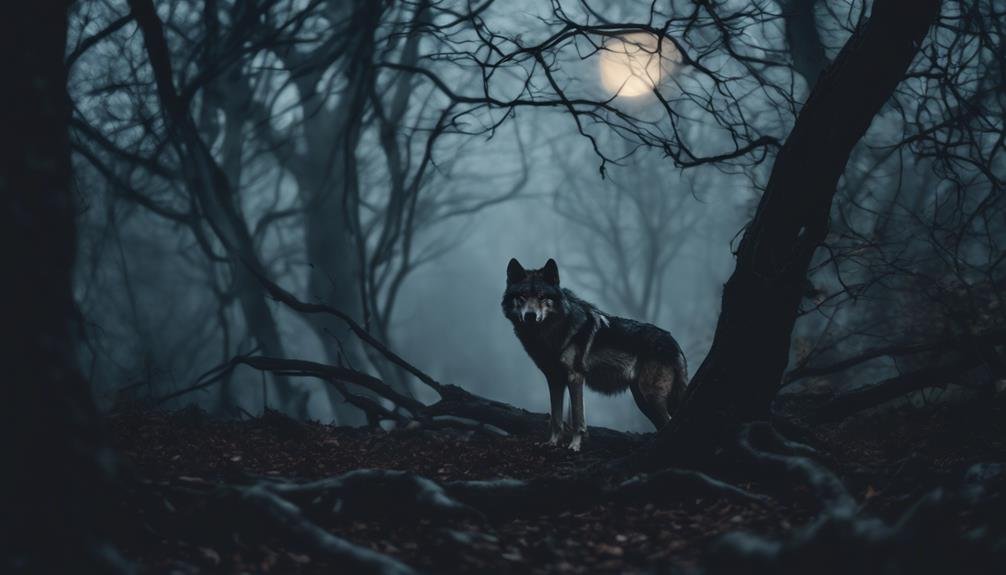In the wilderness, wild predators roam freely, posing a significant threat to human safety and prompting a growing concern for coexistence. Brown bears, grizzly bears, mountain lions, and wolves are known to attack humans, resulting in injuries and fatalities. Habitat conservation is necessary to safeguard their survival and reduce human-bear conflicts. Understanding their behavior and taking conservation measures can help prevent fatalities and promote coexistence. As we venture into their territory, it is essential to be aware of our surroundings and take necessary precautions to minimize the risk of encounters gone wrong. There is more to explore in this complex web of predator and human interaction.
Key Takeaways
- Brown bears, grizzly bears, mountain lions, and wolves are wild predators that can attack humans, resulting in injuries and fatalities.
- Habitat conservation is necessary to safeguard their survival and reduce human-bear conflicts, promoting coexistence.
- Understanding their behavior, such as feeding patterns and habitats, is essential for effective conservation efforts and minimizing encounters gone wrong.
- Exercise caution when venturing into predator habitats, being aware of surroundings to reduce the risk of deadly encounters.
- Debunking myths and understanding facts about bear attacks can help prevent conflicts and promote coexistence with wild predators.
Deadly Encounters With Wild Predators
Encounters with wild predators, such as brown bears, grizzly bears, mountain lions, and wolves, can quickly turn deadly, resulting in injuries and fatalities. It is essential to understand their behavior and habitat to mitigate potential threats. Brown bears, for instance, are known for their feeding habits, which play a pivotal role in their natural behavior. Habitat conservation is necessary to safeguard their survival and reduce human-bear conflicts. By preserving their natural habitats, we can minimize encounters that may turn deadly. Understanding these predators' behavior and taking conservation measures can help prevent fatalities and promote coexistence with these wild animals.
Brown Bears in Their Habitat
In their natural habitats, brown bears have evolved to thrive in Southeast Alaska, where they feed on abundant resources, making habitat conservation vital to their survival. Brown bears' habits are shaped by their environment, with a diet consisting of salmon, berries, and grasses. Their omnivorous diet allows them to adapt to seasonal changes, making them a keystone species in their ecosystem. Grizzly senses, such as their keen sense of smell, aid in foraging and detecting potential threats. Understanding brown bear habits is essential for effective conservation efforts, ensuring the long-term survival of these majestic creatures in their natural habitats.
Grizzly Bear Attacks on Humans
Grizzly bear attacks on humans are a pressing concern in North America, with numerous recorded incidents resulting in injuries and fatalities. In Montana, a 40-year-old man was mauled by a grizzly bear while fishing, highlighting the risks of encountering these predators in their habitats. Debunking Grizzly myths, it is essential to recognize that these bears are not inherently aggressive, but will defend themselves when feeling threatened. As a common predator in North America, grizzly bears inhabit various predator habitats, including forests and mountainous regions. It is vital to exercise caution when venturing into these areas, being aware of one's surroundings to minimize the risk of encounters gone wrong. By understanding grizzly behavior and respecting their space, we can coexist with these wild predators.
Mountain Lions: Silent Hunters
Mountain lions, also known as cougars or pumas, have earned a reputation as stealthy predators, with their powerful physiques and agile movements allowing them to stalk and ambush prey with deadly precision. Found in California habitats, these skilled hunters are a threat to human safety, attacking domestic turkeys and even joggers and outdoor enthusiasts. Their hunting techniques involve stalking and ambushing prey, making them silent and efficient predators. As apex predators, mountain lions play a vital role in maintaining the balance of their ecosystems. It is essential to understand and respect their place in the wild, acknowledging their power and agility as silent hunters.
Wolves: North America's Apex Predators
As apex predators, wolves play a pivotal role in maintaining the ecological balance of North America's wilderness areas, where their hunting prowess and social behavior have earned them a reputation as both fascinating and feared creatures. Wolves inhabit a vast range of habitats, from forests to tundras, and their adaptability has allowed them to thrive in diverse environments. Wolf socialization is a key aspect of their behavior, with pack dynamics and communication playing a central role in their survival. In their natural habitat, wolves are essential for maintaining a delicate balance between prey and predator populations, making them a fundamental component of North America's ecosystems.
Understanding Bear Behavior Patterns
What drives bears to venture into human-dominated landscapes, and how do their behavior patterns impact human-bear interactions? Understanding bear behavior is essential for effective bear conservation and minimizing conflicts. Bears are attracted to human-dominated landscapes due to food availability, habitat fragmentation, and climate change. Their behavior patterns, such as foraging and denning, are influenced by these factors. Predator tracking and monitoring can help identify areas of high bear activity, enabling targeted conservation efforts. By studying bear behavior, we can develop strategies to mitigate human-bear conflicts, ensuring the long-term survival of these apex predators. Effective bear conservation requires a thorough understanding of bear behavior patterns and their impact on human-bear interactions.
Debunking Myths About Bear Attacks
Despite their fearsome reputation, many myths surround bear attacks, and separating fact from fiction is essential for effective bear conservation and minimizing conflicts. One common myth is that menstruating women are more likely to be attacked by bears, which has been debunked by experts. In reality, bear attacks are often a result of human error, such as improper bear feeding or encroaching on predator habitats. By understanding the facts, we can take steps to prevent conflicts and promote coexistence with these wild predators. Effective conservation and management of bear populations rely on evidence-based information, rather than perpetuating myths and misconceptions. By separating fact from fiction, we can work towards a safer and more harmonious relationship with bears.
Staying Safe in Predator Country
When venturing into predator country, being aware of one's surroundings and taking necessary precautions can substantially reduce the risk of encounters gone wrong. Understanding bear habitats and feeding patterns is essential in staying safe. For instance, brown bears in Southeast Alaska feed on natural resources, while grizzly bears in Montana have a strong sense of smell. Mountain lions in California are skilled hunters, and wolves in North America are known for their hunting prowess.
| Predator | Habitat | Feeding Patterns |
|---|---|---|
| Brown Bears | Southeast Alaska | Natural resources |
| Grizzly Bears | Montana | Strong sense of smell |
| Mountain Lions | California | Skilled hunters |
Frequently Asked Questions
Can You Outrun a Wild Predator if Attacked?
When attacked by a wild predator, outrunning is unlikely; fatigue factors, such as terrain and weather, hinder escape. Instead, employ survival strategies like staying calm, making oneself appear larger, and using bear spray or other deterrents to increase chances of survival.
Are Wild Predators Attracted to Certain Scents or Perfumes?
Research reveals that 75% of bear attacks occur due to scent attraction. Wild predators, such as bears and mountain lions, are drawn to strong scents, including perfumes and fragrance traps, which can trigger scent markings and increase the likelihood of encounters.
Can Wild Predators Be Deterred by Loud Music or Noise?
Research suggests that loud music or noise may not be an effective deterrent for wild predators, as they can adapt to sound waves and navigate around noise barriers, making alternative deterrent methods necessary.
Are There Any Wild Predators That Primarily Hunt at Night?
Under the veil of darkness, nocturnal habits govern the hunting patterns of certain wild predators, such as mountain lions, which become moonlight stalkers, exploiting the cover of night to ambush their unsuspecting prey.
Can Wild Predators Recognize and Target Specific Individuals?
Wild predators, driven by instinctual recognition and memory triggers, can potentially recognize and target specific individuals, although this is not a guaranteed behavior, and more research is needed to fully understand this complex phenomenon.
Conclusion
In summary, the presence of wild predators in North America necessitates awareness and caution. With an average of 47,000 bear attacks reported annually in the United States, it is essential to understand the habits and habitats of these apex predators. By recognizing the importance of coexistence and taking necessary precautions, humans can minimize the risks associated with encounters.









